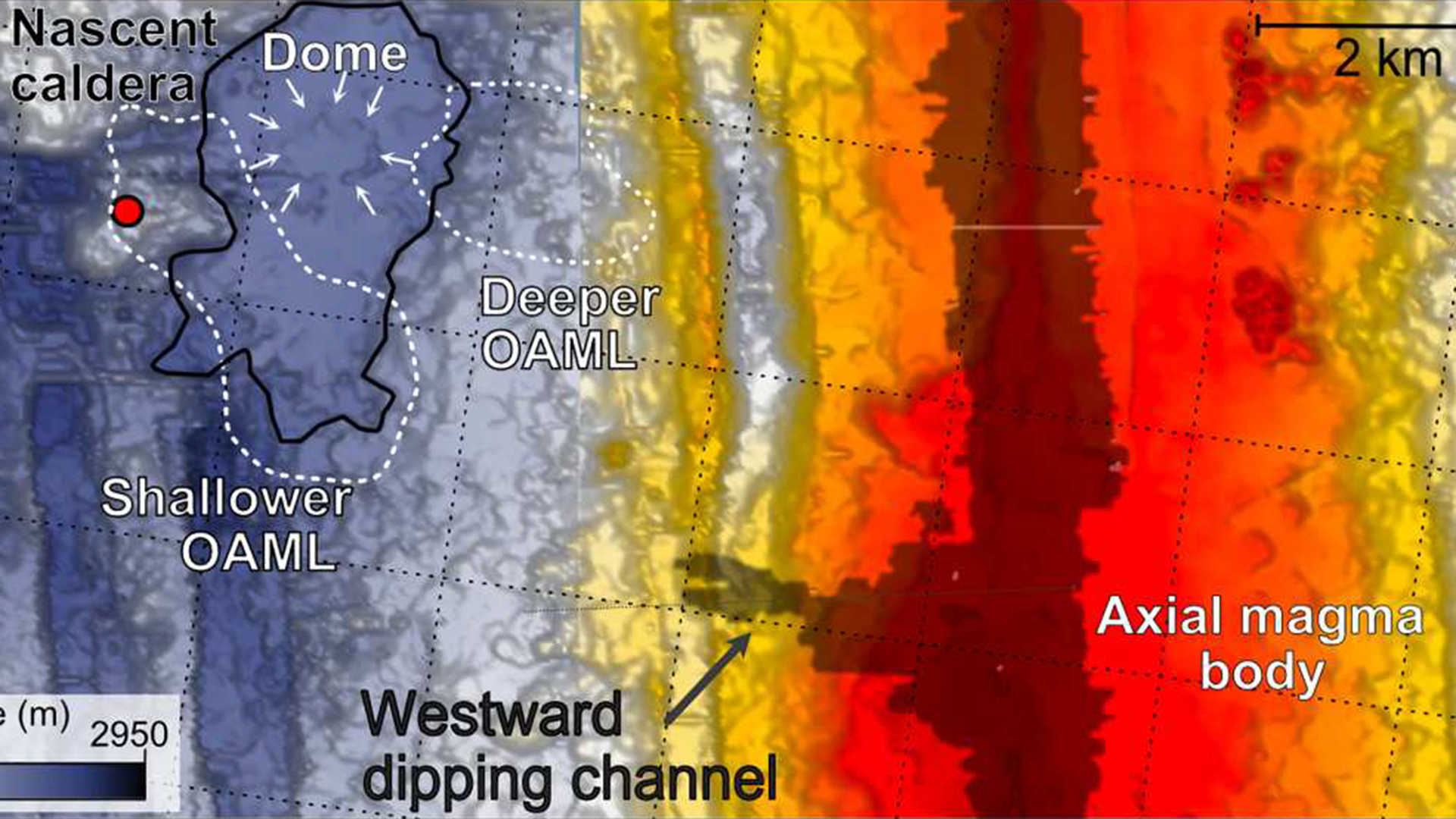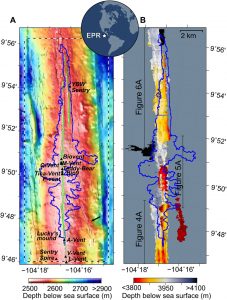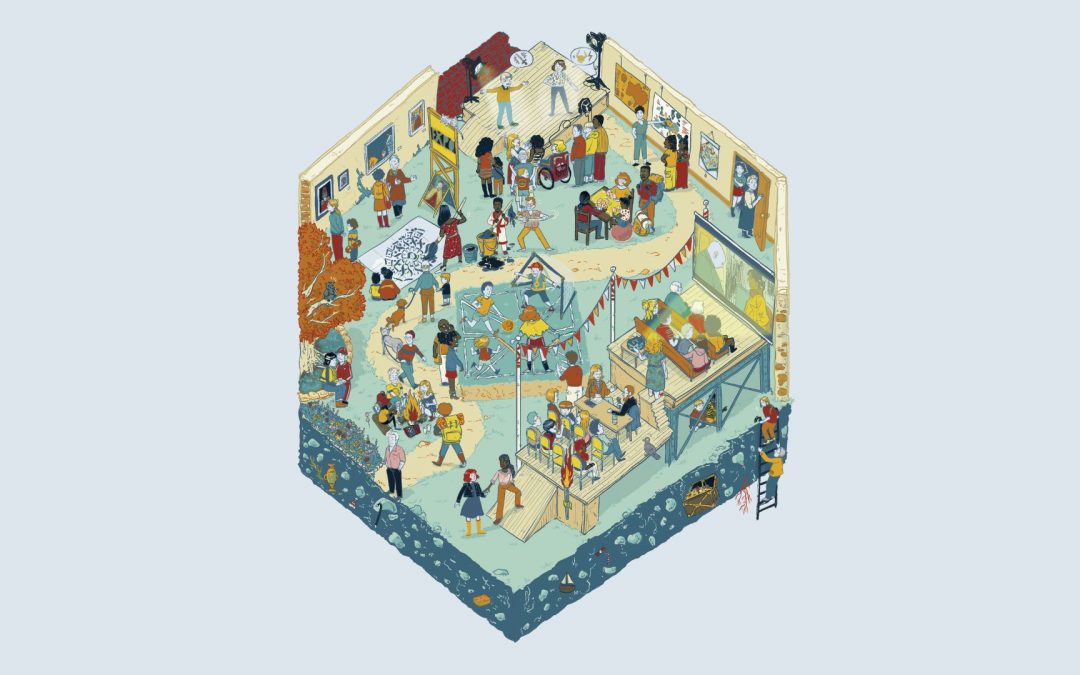By imaging for the first time at high resolution and in 3D the magmatic system under the East Pacific Ridge, an international team led by Milena Marjanović, CNRS researcher at the Institut de Physique du Globe de Paris, sheds light on the morphology of the magma lenses representing the last stages of magma before eruptions of lava on the surface.
The study, published on September 29 in the journal Science Advances, shows that the shape of these small magma reservoirs remembers the processes of magma recharge and drain, influencing the dynamics of future eruptions.

© Marjanovic – CNRS-IPGP
Numerical modeling results show that the architecture of magma plumbing systems between the Earth’s mantle and surface and how magma evolves through these systems play a fundamental role in the construction and evolution of volcanic edifices. However, due to the inaccessibility of most active volcanic systems to high-resolution imaging, the detailed morphology of the most superficial magma reservoirs and the relationship between magma upwelling initiation and eruption dynamics still need to be discovered.

Topography and tectonics of the ocean floor (left) and 3D morphology of magmatic lenses beneath the surface (right) of a segment at the East Pacific Rise. © Marjanovic – CNRS – IPGP
A study published on September 29 in Science Advances by an international team involving scientists from the CNRS, the Institut de Physique du Globe de Paris and Université Paris Cité presents unprecedented high-resolution seismic images that shed light on the small-scale architecture of the network of shallowest magma bodies, located beneath an erupting zone of the East Pacific Rise. These images, the result of a close collaboration with industry experts, which enabled a cutting-edge imaging technique, were obtained by inverting the waveforms of seismic reflection data acquired during a marine research cruise conducted in 2008.
The study reveals that these lenses, which were until now modeled as smooth bodies, in reality present ridges and troughs which are interpreted as zones where repeat dikes (seams of magma which rise from the reservoir up to the surface) nucleate. This peculiar morphology is sculpted by the processes of magma recharge from the mantle and magma extraction towards the surface. The recurrence of these processes leaves an imprint, linked to the concentration of stresses induced by the topography, which contributes to the nucleation of the dikes and the triggering of the rise of magma towards the surface and more broadly to the dynamics of subsequent eruptions.
By including these new results in the latest generation of three-dimensional numerical models, it should now be possible to obtain a more realistic representation of volcanic systems which will contribute to better localization of eruptions, and thus to the improvement of risk assessment.
References:
> Insights into dike nucleation and eruption dynamics from high-resolution seismic imaging of magmatic system at the East Pacific Rise, Marjanović et al., Sci. Adv. 9, 2023.
À lire aussi

Lancement du Club Innovateurs de l’université Paris Cité
Le 3 juillet 2024 s’est tenue la réunion de lancement du Club Innovateurs de l’université Paris Cité au Liberté Living Lab. Cette initiative réunit des chercheuses et des chercheurs employés ou hébergés par UPCité, ayant obtenu un concours...
read more
Participez à la journée de Sensibilisation à la Science Ouverte de Circle U. !
Le 28 septembre prochain, l’équipe de Circle U., l'alliance européenne vous donne rendez-vous sur le campus des Grands Moulins pour participer à une journée de sensibilisation à la Science Ouverte. Au programme : ateliers sur les sciences participatives et la gestion...
read more
Université Ouverte : découvrez le programme 2024-2025 !
Vous souhaitez apprendre une langue étrangère ? Vous initier à l’histoire de l’art ? Enrichir votre culture générale au travers de cours d’histoire ou de géopolitique ? Découvrir les mécanismes de notre cerveau ou encore vous initier à l'astrophysique ?...
read more
Du 11 au 14 septembre 2024, les sciences humaines et sociales investissent la Cité
Autour de trois grandes thématiques en lien avec les valeurs des Jeux Olympiques et Paralympiques - jeux & créativité, rivalités, migration & racisme - venez découvrir ou re-découvrir les sciences humaines et sociales lors des Olympiades Humanités et sciences...
read more